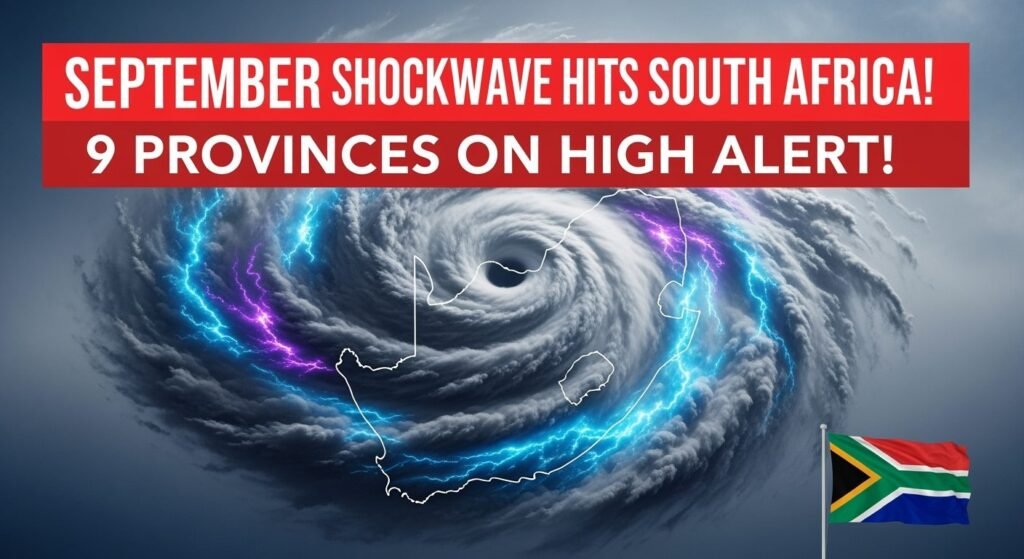September weather warning: I’ve been closely monitoring the latest updates from national meteorological services, and it’s important that you stay informed about the recent weather warnings issued for several provinces. Weather authorities have raised significant concerns about potentially hazardous conditions expected throughout September. These warnings shouldn’t be taken lightly as they indicate increased risks of severe weather events that could impact daily activities, infrastructure, and even personal safety. The meteorological department has specifically highlighted several provinces that face elevated risks due to unusual weather patterns developing across the region. Have you noticed any changes in your local weather patterns lately?

What Are The September Weather Warnings?
The September weather warnings issued by authorities encompass several concerning phenomena. Meteorologists are predicting above-average rainfall in northern and central provinces, potentially leading to localized flooding and soil saturation issues. In contrast, southern regions may experience unseasonably dry conditions, raising wildfire concerns in vulnerable areas. Strong wind advisories have also been included in these warnings, with gusts potentially reaching dangerous speeds in coastal and mountainous regions. Temperature fluctuations are another concern, with rapid shifts between warm and cold fronts that could stress infrastructure and agriculture. Weather authorities have emphasized that these September weather warnings require public vigilance and preparedness as conditions may change rapidly with minimal notice.
Why These Warnings Matter
These weather warnings carry significant implications for both public safety and economic stability. First and foremost, severe weather events can pose direct threats to human life through flooding, lightning strikes, or infrastructure damage. Agricultural sectors face particular vulnerability, as crops at critical growth stages could suffer irreparable damage from extreme conditions. Transportation networks may experience disruptions, affecting supply chains and emergency services. Energy infrastructure could also face strain during peak demand periods caused by temperature extremes. The economic impact extends to tourism and outdoor industries that rely heavily on predictable September weather patterns. By issuing these warnings early, authorities aim to mitigate potential damages through proper preparation and resource allocation. Remember that historical data shows that properly heeded weather warnings significantly reduce casualty rates during severe events.
How To Prepare For These Conditions
Preparing for the forecasted weather conditions requires a multi-faceted approach. Start by creating an emergency kit containing essential supplies like non-perishable food, water, medications, flashlights, and batteries – enough to sustain your household for at least 72 hours. Secure outdoor items that could become dangerous projectiles during high winds. Clear gutters and drains to prevent water accumulation and potential flooding around your property. Stay informed by monitoring reliable weather sources and signing up for emergency alerts from local authorities. If you live in flood-prone areas, consider obtaining sandbags or other flood barriers. For those in regions facing drought conditions, conserve water and be mindful of fire restrictions. Review your insurance policies to understand coverage for weather-related damages. Most importantly, develop and practice an emergency evacuation plan with your family, including meeting points and communication strategies if separated.
When To Take Immediate Action
Timing is crucial when responding to severe weather events. Take immediate action when authorities issue upgraded warnings from advisory to watch or warning status – this progression indicates increasing certainty and severity of conditions. If you observe rapidly darkening skies, increasing wind speeds, or unusual precipitation patterns, don’t wait for official notifications to seek shelter. Flash flood warnings require particular urgency, as water levels can rise with surprising speed. During thunderstorms, remember the 30-30 rule: if thunder follows lightning by less than 30 seconds, seek shelter immediately and remain there until 30 minutes after the last thunder. For those in areas under wildfire risk, evacuate without delay if authorities issue orders – waiting too long can place both you and emergency responders at risk. September weather warnings may escalate quickly, so maintaining situational awareness and having emergency plans ready to execute can make the critical difference in ensuring safety.
Recent Historical Precedent
Last September, the northeastern provinces experienced similar weather warning patterns that ultimately resulted in significant flooding. The meteorological department had issued early warnings, but many residents were caught unprepared when three major river systems overflowed simultaneously. Over 15,000 people were temporarily displaced, and infrastructure damage exceeded $50 million. The agricultural sector suffered particularly severe losses when nearly 40% of the corn harvest was destroyed. This historical example underscores the importance of taking September weather warnings seriously and implementing preparedness measures well before conditions deteriorate.




